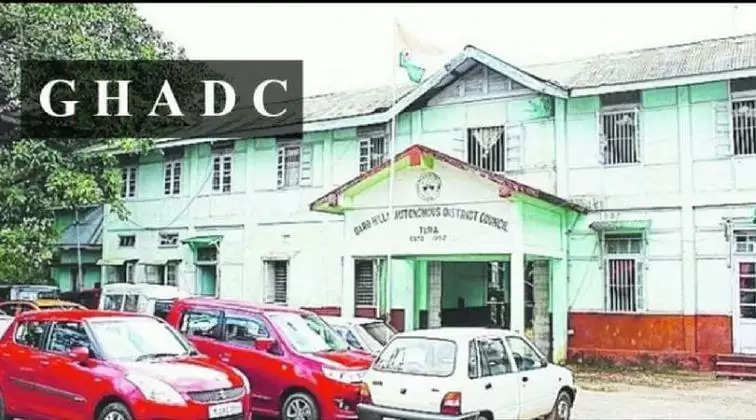Meghalaya: How bad is the GHADC mess?

TURA
It is a known fact that the situation in the Garo Hills Autonomous District Council (GHADC) is in shambles.
For the past several months, the GHADC had become a political battleground with allegations and counter-allegations of corruption making headlines almost daily.
Recently, the financial situation concerning the GHADC was pointed out through a presentation by Secretary Rikse Marak, and this has been doing the rounds on various social media platforms.
The presentation focused on the birth of the GHADC, and how it came about in 1951 with a formal start in the year 1952.
The GHADC was constituted and formally inaugurated on April 14, 1952, in Tura by (L) Bishuram Medhi, the then Chief Minister of the composite state of Assam.
They held the first general election in February 1952, with the term of elected members being five years.
As we all know, GHADC employees have remained unpaid for over two years now while the long list of contractors whose bills were cleared is piling up.
The situation has come to such that aggrieved employees have even taken the Council to Court over their dues with an unending spat between the authorities concerned and the employees’ association led by the Non-Gazetted Employees Association (NGEA).
There are 17 different departments under the Council, including Forests, Land and Revenue, Justice, Civil Works and others which form part of the revenue for the GHADC.
According to the report, as of January 2019, there were 2,300 GHADC employees with 1,126 staff recruited between January 2009 to Mar 2018.
However, the numbers reduced drastically when a roll call was done and came down to 1,780.
There was a further reduction in the number after many employees retired while some had availed the GHADC voluntary retirement scheme. Others were let go for failing to report for duty.
Admittedly, most of the recruits were not even qualified for their roles and position.
The fact is that the GHADC was under a lot of stress because of the recruitment done between 2009 and 2018.
At present, the strength of the GHADC stands at 1,658.
The staff reduction only happened following the setting up a personnel department in 2019 after the present Secretary took over.
For salaries to be paid in the 4th Pay Commission Scale, they require about Rs 4 crore. The amount will shoot up to about Rs 6 crore if they implement the 5th Pay Commission.
Revenue from the GHADC comes in three tranches, from its own fund (state royalty share and its taxes and revenues), Grant-in-Aid and through Central Assistance Funds.
“The challenges faced by the GHADC include the mostly 1,126 appointments between 2009-2018, most of which were unqualified. This includes the difference between income and expenditure (average income is Rs 1.7 crore while the expenditure is over Rs 4 crore), pending bills, creation of new departments (which will have additional costs), work order backlogs, dilapidated infrastructure, redundant (zero income departments), no service rules, no financial rules among others,” stated the presentation which has been endorsed by the Secretary herself.
According to the Secretary, since she took over reins, 13 months of salaries out of 24 have been disbursed.
Gratuity, leave (backlogs), and the advance of children’s education have been made with Rs 55 crore and over being disbursed.
The presentation added that Rs 20 crore was received by the Council between January 2019 and December 2020 from the DMR and Transport departments.
Projects to stem the rot and make a more workable system included the creation of a single-window system, payroll setup, revision of TNT rates, and service rules that were sent to the DCA for approval, among others.
ALSO READ: NGEA writes to state departments seeking the release of pending dues to GHADC
The GHADC admittedly suffers from exorbitant expenses, the lack of income-generating departments, reliance on a manual system of revenue collections which allows for pilferage and entitlements to ex-members and officers have hit the system extremely hard.
“We have been able to curb expenditure while trying to streamline the system. There has been a lot of resistance to change. But we are doing our best to ensure the situation changes for the better. Hopefully, GHADC will see better days,” Marak said.
“As a community, the Garos are extremely fortunate to get an autonomous body for self-governance with little struggle.”
“It would be a shame to not be able to maintain that which is ours. All efforts have to be made to ensure the GHADC carries on for generations that come after. Its importance as an institution cannot be overstressed,” she added.
The Non-Gazetted Employees Association (NGEA) has been up in arms against the Secretary over several issues, with allegations of manipulation and financial irregularities being one of them.
(Edited by Andre Kongri)

















